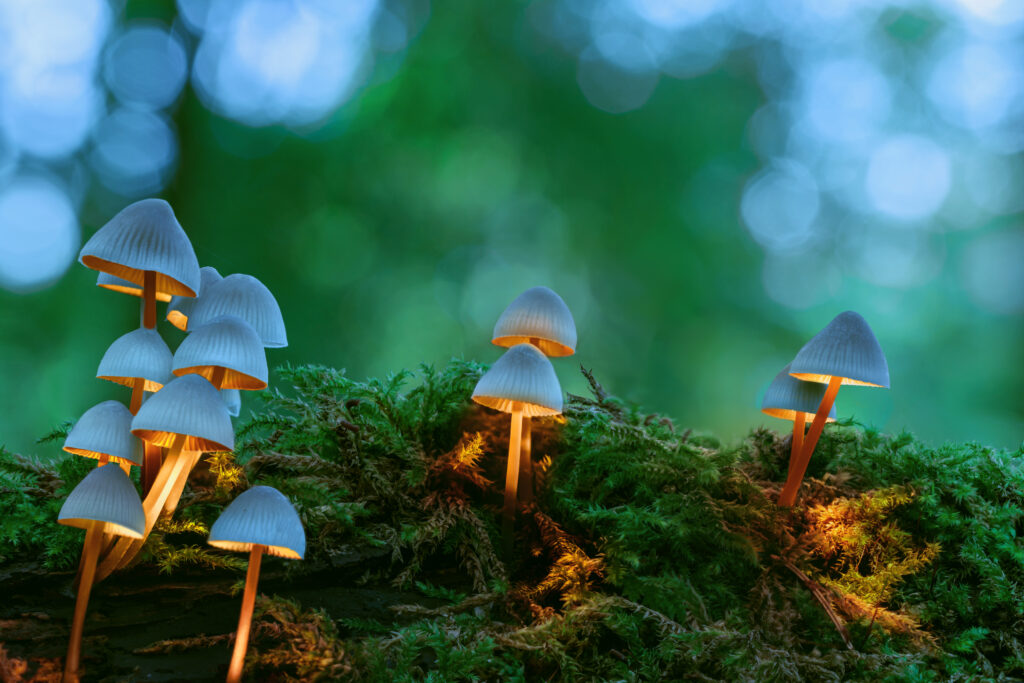Psychedelic drugs have become the special focus of a lively news flap in recent years. Publicized as a Psychedelic Renaissance, this newly percolating interest follows lines originally laid in the 1960s by Timothy Leary and colleagues. Back then, LSD played a leading role in research and popular intrigue. It became emblematic of the era. As a sign of the times, it was in all the papers.
Based on early research, LSD had great expectations pinned on it as the 1960s dawned.
But it emerged from the decade as damaged goods with a checkered reputation.
In the current revival, psilocybin, an active ingredient of Psilocybe, aka magic mushrooms, has taken the lead as resurgent interest’s best foot forward. In 2006 it figured in a watershed New York Times story, Scientists look anew at ‘magic’ mushroom, the first publicized word of a rekindling afoot. Lead researcher Roland Griffiths stated: “We are conducting rigorous, systematic research with psilocybin under carefully monitored conditions, a route which Dr. Leary abandoned in the early 1960s.” Amid renewed psychedelic fanfare, magic mushrooms have been spotlighted for a unique lack of adverse effects. They have been publicized as the ‘safest drug,’ as mainstream media articles reflect, Magic mushrooms are the ‘safest’ illegal drug, survey finds CNBC, Magic mushrooms are the safest recreational drug, study says USA Today.
Among facts unreported by promotional news, Psilocybe has been noted for acute central nervous system complications. These include temporary paralysis and seizure, with fatal results on occasion. One such death was on record already by the early 1960s, in Oregon (a grim reflection, given current developments there to allow use of the drug in therapeutic settings). This incident involved children who had playfully eaten wild mushrooms, afterward identified as Psilocybe. Of four stricken, three survived.
This 1962 tragedy preceded today’s era of Psilocybe hunting and cultivation. As a harbinger of things to come, it resonated in scattered warnings of subsequent decades, custom-tailored for the intrepid, about complications conceded as possible – exclusively in children:
“This report is at least suggestive that psilocybin mushrooms might provoke an anomalous reaction in children… convulsions, possibly with fatal sequelae… (but) psilocybin is remarkably non-toxic in adults.” (J. Ott, 1993, “Pharmacotheon,” p. 353)
For those duly cautioned not to be preteens while mushroom tripping and taking reassurance thus, the age of the internet brought a rude awakening in the first report of an adult death linked with Psilocybe seizure:
“Friends… started worrying… after some convulsions… the victim was apparently healthy … no other toxins… had not drunk alcohol, was not on drugs… The so-called innocuousness of hallucinogenic mushrooms is now questioned.”
Today’s landscape of public discussion has been profoundly altered by the internet, with its prolific growth in recent decades. Venues for psychedelic interests anonymously abound, with more being founded continually. More people now than ever before are trying magic mushrooms, incurring whatever consequences as psychedelic popularization steamrolls on. And an ominous incidence of seizure glares among dire indications surfacing in recent years, as internet-facilitated. Based on what can be gleaned, tragedies seem fairly few and far between. But as also reflects, how unusual is the psychedelic mushroom seizure itself? And does it harbor other significant medical issues? Concerning the latter:
Epilepsy Foundation: “Certain populations of brain cells may die after single or repeated brief seizures… seizures adversely alter brain function in other ways besides killing cells.”
Seizures Are Bad for Your Brain’s Health “Generalized seizures appear to cause progressive brain dysfunction in patients with temporal lobe epilepsy… When seizure activity is markedly prolonged… brain damage can occur quickly and be profound.”
Even barring fatality, Psilocybe seizure arguably poses a considerable public health concern. With the increasing indulgence bolstered by false reassurances of safety, media cheerleading, and local decriminalization activism, brain damage by Psilocybe seizure may be invisibly on the rise, unchecked and undetected.
Regarding incidence:
A redditor (Jan. 21, 2020): “I feel awful. I recommend my friend take 3.5 g shrooms … (he) had a seizure… never had a seizure before. I’ve listened to hours of lectures by the many great psychedelic connoisseurs like Stamets, McKenna, Pollan, etc., and have never once heard… Yet there are literally hundreds of reports of people going through what my friend went through on different forums… how the hell did I not know about this?”
As apparent from many accounts, seizure by Psilocybe is nothing uncommon. Yet it goes systematically unmentioned by solicitors. Many reports implicate Psilocybe cubensis, the most commonly homegrown species, and others from the wild. All of this displays only in underground discourse as it has come of age. And despite the apparent frequency of seizures, it strikes by surprise when it comes to calls.
This represents a note unsounded in psychedelic research and advocacy alike, pointing to an alarmingly deficient awareness. Studies to address issues of less promise than peril seem urgently warranted.
Unfortunately, psychedelic science is funded inordinately by an activist base united in pursuit of a purportedly radiant potential first publicized by Team Leary. Committed objectives of special interest, personally shared, take precedence over all else, binding supporters to promotion as the sole priority. Psilocybe-induced seizure is anathema to such forgone purposes. That psychedelic mushrooms are promoted for mental health poses a dark, crowning irony.
Psychedelic research is overdue for thoroughly independent expert review.
Let the public be advised, and beware.
Why is the FDA Allowing Unsafe Drug Imports?(Opens in a new browser tab)
Editor’s note: Brian Akers, Ph.D., is accredited in plant and fungal biology, as well as anthropology and comparative religion. Awarded for excellence in teaching, he has taught at several higher education institutions, including the University of Minnesota, Morris. His research has been published in peer-reviewed journals of scientific societies, and he has been featured for his unique expertise on History Channel (“The Stoned Ages”). The view offered here is exclusively his own, with no warrantee on any others, express or implied. The information presented may not be suitable for all interests. Reader discretion is advised.
